Our PhD Students
Lee Soo Jin
Lee Soo Jin is a PhD candidate at the School of Art, Design and Media at Nanyang Technological University in Singapore. She finished her Bachelor’s degree in Fine Art and majored in photography in Korea, and her minor was philosophy. She obtained her Master of Arts degree in Photography and New Media in Germany. Her research interests lie in artworks based on personal narratives.
Her dissertation ‘I’ in Narrative: A Study on Contemporary Visual Autobiography Using Photography as a Significant Medium in Multimedia Installation investigates autobiographical artistic practice in contemporary visual arts, which is closely related to, but distinct from, self-portraiture. The thesis proposes the distinct genre of ‘visual autobiography’ to capture the autobiographical artistic field and suggests a theoretical framework. The research conducts case studies on three artists who use photography as a significant medium in multimedia installation: Christian Boltanski, Felix González-Torres, and Barbara Proschak. Among various visual media, the dissertation pays particular attention to photography, since its realistic representation paradoxically contributed to the diversification of artist’s self-representation. Combining phenomenology and case studies as a research methodology, following the tradition of Bildwissenschaft, the research elucidates a complex relationship between the visual autobiographer and the recipient that revolves around images. The thesis illustrates ‘narrative of self’ as a hallmark of visual autobiography and illuminates its life-affirmative aesthetics.
Muhammad Ridzal Bin Abdul Hamid

Muhammad Ridzal is interested in the intersections between art history, performance, and curatorial practice. He holds an MA in International Performance Research from the University of Warwick (awarded jointly with the University of Tampere) and a BA (Hon.) in Theatre Studies from the National University of Singapore.
His research examines the intersection between exhibition-making and/as performance, questioning the commonly held assumption that art exhibitions function merely as neutral, objective displays of works of art. The thesis takes several art exhibitions mounted in Singapore from 1996 to the present as case studies and argues that it is necessary now, more than ever before, to study art exhibitions in Singapore as performance, to understand what exactly it is that they perform and how they do so.
Tang Tze Yin Junie

Tang Tze Yin Junie is interested in Curatorial Practice, Design Methodology, Graphic Design, Problem Solver Versus Problematiser, and Design Thinking Versus Critical Design. Her current research titled Graphic Designer as Curator: From a Problem-solver to a Problematiser aims to deconstruct a graphic designer's role as a problem-solver, then reconstruct it as a curator who problematises "wicked" societal problems through critical design.
Lydia Wong-Plain

Lydia Wong-Plain’s research focuses on developing new trajectories between the arts and the community through the critique of Museums in tandem with cultural policy. Prior to her studies at NTU, she was a banker at several financial institutions managing investment portfolios for an international clientele. Melding together knowledge of the arts and finance, her research questions the performativity and experience of public spaces in our current landscapes of diversity, spatial shifts and inevitable anxieties. In employing a tripartite framework investigating historical collections, museum environments and cultural policy, her thesis seeks to design compelling pedagogical spaces which encourages plurality and the recalibration of carelessly established conventions.
Wu Kai Wen Ellice

Her dissertation, Allegory, Identity and the Performative Muse: Angelica Kauffman’s London Self-Portraits, 1766-1781, re-examines the London self-portraits of Angelica Kauffman (1741–1807) by considering how Kauffman presented and invented her identity as professional artist, Muse and allegory, thus asserting her place and value as a woman artist in late eighteenth-century London. Viewed in parallel with the work of fellow female professionals in the artistic and literary fields, Kauffman’s self-portraits engage with prevalent discourses of sensibility, femininity and the wider historical and cultural resonances of the emergent empire and its adopted style of neoclassicism. Ellice’s research is supported by the NTU Research Scholarship, Trailblazer Foundation’s Study Grant, and the Paul Mellon Centre for Studies in British Art’s Research Support Grant.
Ellice Wu received her BA from the University of Hong Kong (HKU), with a major in Art History and minors in China Studies and Korean Studies. She was awarded the Paul & Petra Hinterthür Prize from HKU’s Department of Art History in 2017 for achieving the best results in Western art history.
Andrew Ng

Andrew Ng is an arts practitioner, educator, and scholar, who works across theatre, film, and photography. He has worked closely with the critically acclaimed theatre company Wild Rice, winning a Life Theatre Award for his multimedia design for Supervision (2018). In 2017, he directed Skin Tight, a collaboration with the dance choreographers Ah Hock and Peng Yu for the M1 Fringe Festival. Ng’s research interests lie in queer representation in the arts and the recovery of queer narratives in the East Asian and Southeast Asian regions from oral histories and personal archives. He holds an MA with Distinction in Performance Making from Goldsmiths College, UK, and a BFA with Honours in Photography and Digital Imaging from Nanyang Technological University.
Ng’s PhD research project is an investigation into queer vernacular photography from Singapore between 1965 and 1985. It proposes a potential history of the queer community through the study of everyday photographs by and/or of gay men and trans women. Utilizing the methods of photo archival research and case studies supported by visual analysis and oral history interviews, the research asks: What can we learn by looking in parallel at how a nation defined itself post-independence and how its queer citizens were doing the same?
Li Su

Li Su explores digital art practice with a focus on the contemporary museum. Her work concerns the social meaning of the museum, with a particular interest in the network of the broader emergent culture of art in the globalized communication network.
Prior to her studies at NTU, Li Su has worked at design companies in Los Angeles and New York City. She completed her bachelor’s degree in fine arts at Guangzhou Academy of Fine Arts with National Scholarship Award, and master’s degree in design at School of the Art Institute of Chicago with International Graduate Scholarship Award.
Huang Xinyuan

Her research examines the changing representation of traditional cultures in animations adapted from classical novels and legend stories across the Chinese animation history. There was a unique aesthetic, the “national style” presented in the internationally famous Chinese animations produced in the 1950s and the 1980s. The national style is the cross-cultural art style which mixes the traditional Chinese aesthetic and Western cinematic values. The cross-cultural aesthetic illustrates the essence of cultures and brings subtle emotions on a metaphysical level. However, the ever-changing political environment leads to the changes in the animation styles. The research will focus on analyzing the changing representation of traditional cultures in Chinese animated adaptations from aesthetic, story-adaptation and social political aspects.
Huang Xinyuan earned a Master of Art degree in Visual Culture Studies in the Chinese University of Hong Kong and obtained her bachelor degree in Creative Media. Her research interests include Chinese animation history, animated adaptation theories, cinematic aesthetics and storytelling. She is interested in how the different sets of aesthetics affect the representation of traditional cultures in Chinese animations.
Chunzhi Yin

Heritage Illuminates The Future: The Nantong indigo textile as a show history of Intangible Cultural Heritage and sustainability in China
This Ph.D. research investigates on the Nantong indigo textile included in China Intangible Culture Heritage and purposes of new sustainable and social fabric. From the perspective of culture, wellbeing, and sustainability, seeking the balance between nature and humanity. The reason why intangible culture heritage is immaterial lies on its spiritual and cultural value, and now they are facing extinction. Many studies have shown that our current textile industry is one of the most polluting industries worldwide and we are badly in need of damage control. Textile techniques documented in China.
Intangible Culture Heritage are rich in meanings and eco-friendly. One textile could be a representation of history, culture, art, and religion of the region when it was made. In compare to the past and present, the identity of textile has formed a sharp contrast.
Tan Peng Chai Adrian

I am a Ph.D. student researching into the cross section of art, culture and urban studies. As an artist-educator I have a background in teaching, community and collaborative practices and co-run the artists collective ‘The Artists Company’. Two questions underpin my current research: (1) What forms of artistic interventions has taken place in spaces that has seen rapid urbanisation, modernisation and socio-cultural development? (2) What functions do contemporary art and public art serve in post-colonial nation-states as seen through art and other related fields?
These questions are explored in the critical examination of ‘The Artists Village’, an artists’ collective who situate their artistic practice in the city-state of Singapore. Through this research into their artistic interventions in the Southeast Asian city, my fieldwork involved art works and projects produced in ‘the everyday’ and in public spaces. Such a study involved intersecting the study of art with my other research interests in urban studies, spatial theory, sociology and philosophy. As a result of this approach, my work is focused on examining of the role of arts within the Singapore society and space. Through the development of this research and continuing into the future, I am focused on bridging the gap between studies of a scholarly nature and ‘the everyday’ forms of cultural production by artists in our community.
Swayamsiddha Panigrahi

She's currently researching the transformation of traditional visual art into animation styles in India and neighbouring cultures. The study seeks to understand the mechanics of the visual adaptation of selected traditional visual art informed animation styles through an investigative and reflective approach. Furthermore, the probe is on the negotiations served by the creative practitioners to form the visual grammar of the animations. This topic delves into the ideas of fluid identity, changing roles and reassignment of meanings within the periphery of traditional visual art informed animation styles. The outcome is directed towards identifying and reasoning the mediation points of these two inherently different mediums.
Swayamsiddha is a PhD scholar jointly studying at NTU Singapore and IIT Bombay. Before her doctoral endeavour, she worked as a User Experience Designer, Visual Artist and Architect. She has researched with design practitioners and artist communities across multiple Indian states and south-east Asian countries. Also, she has been awarded for her socially relevant design initiative, 'Project Umbrella: Design to create awareness about Child Sexual Abuse.'
Wong Suet Fong, Angelene
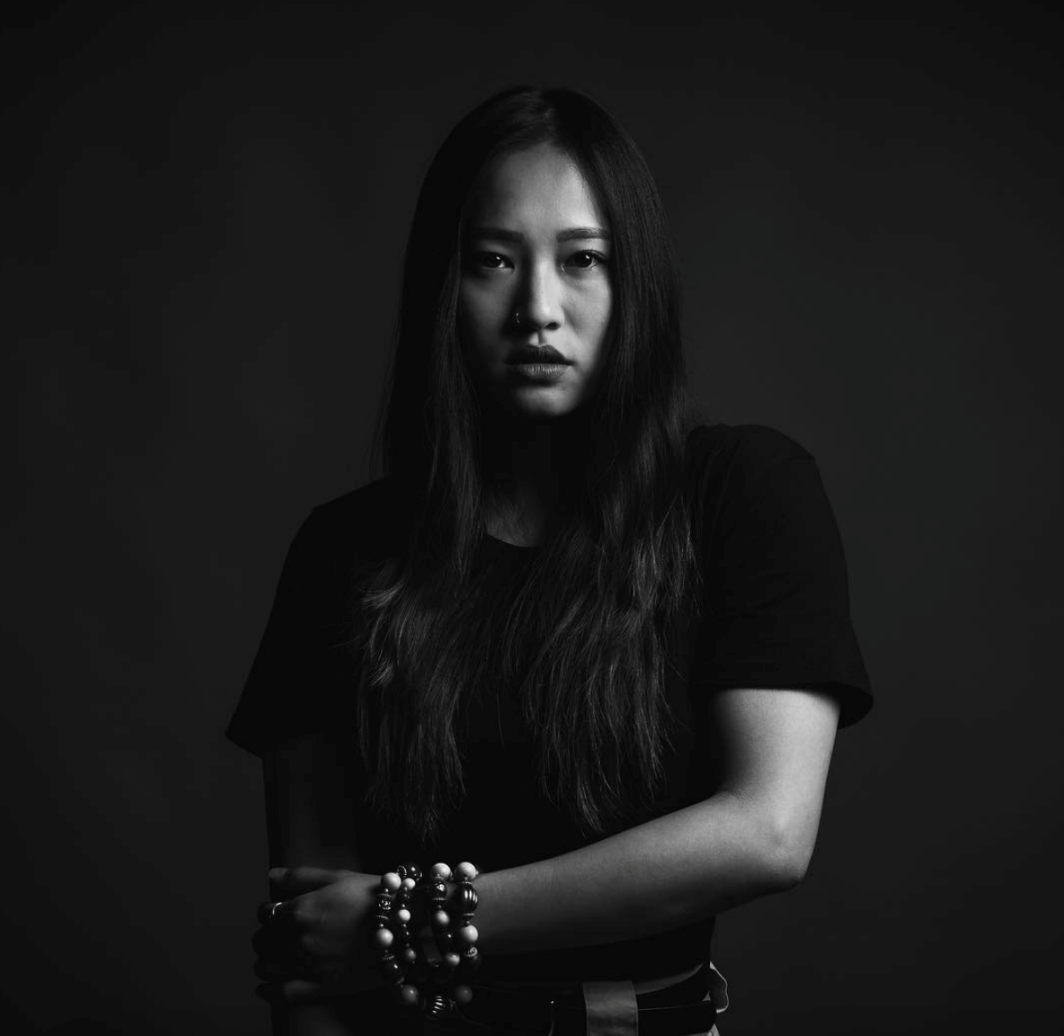
Her dissertation attends to the phenomenon of dance in fashion communication during the digital age. It confronts the question of meaning-making on the affective moving body amidst a system of commodification and capital flow. Thus, it regards kinesthetics within the cultural commodity of fashion as a rich area to understand contemporary body politics.
Angelene Wong is a PhD student (Art, Design and Media – Fashion Studies and Performance Studies focus) and NTU Research Scholarship recipient at Nanyang Technological University. Prior to her studies at NTU, she graduated from The New School, Parsons Paris, with a MA in Fashion Studies. Her research interest combines her training and professional experience as a dancer and the idea of fashion as both a globalised system and a meaningful embodied practice.
Marina Zuccarelli

Her research, Making visible the experience of illness: a participatory photography art project with cancer survivors, aims to explore the potential of photography as a participatory art practice, developed in a cancer centre to generate emancipatory forms of conversation, mutual understanding and empowerment giving visibility to cancer survivors’ experience of illness.
Born in Italy, Marina Zuccarelli holds a master in Economic from the University of Genoa in Italy and a master in Art Management from La Salle College of the Arts. As a photographer she exhibited in Belgium, Switzerland, Singapore and Italy and she has been awarded at Pingyao Photography Festival. Since 2016, she conducts workshops of photography at cancer centers in Singapore.
Gong Ze
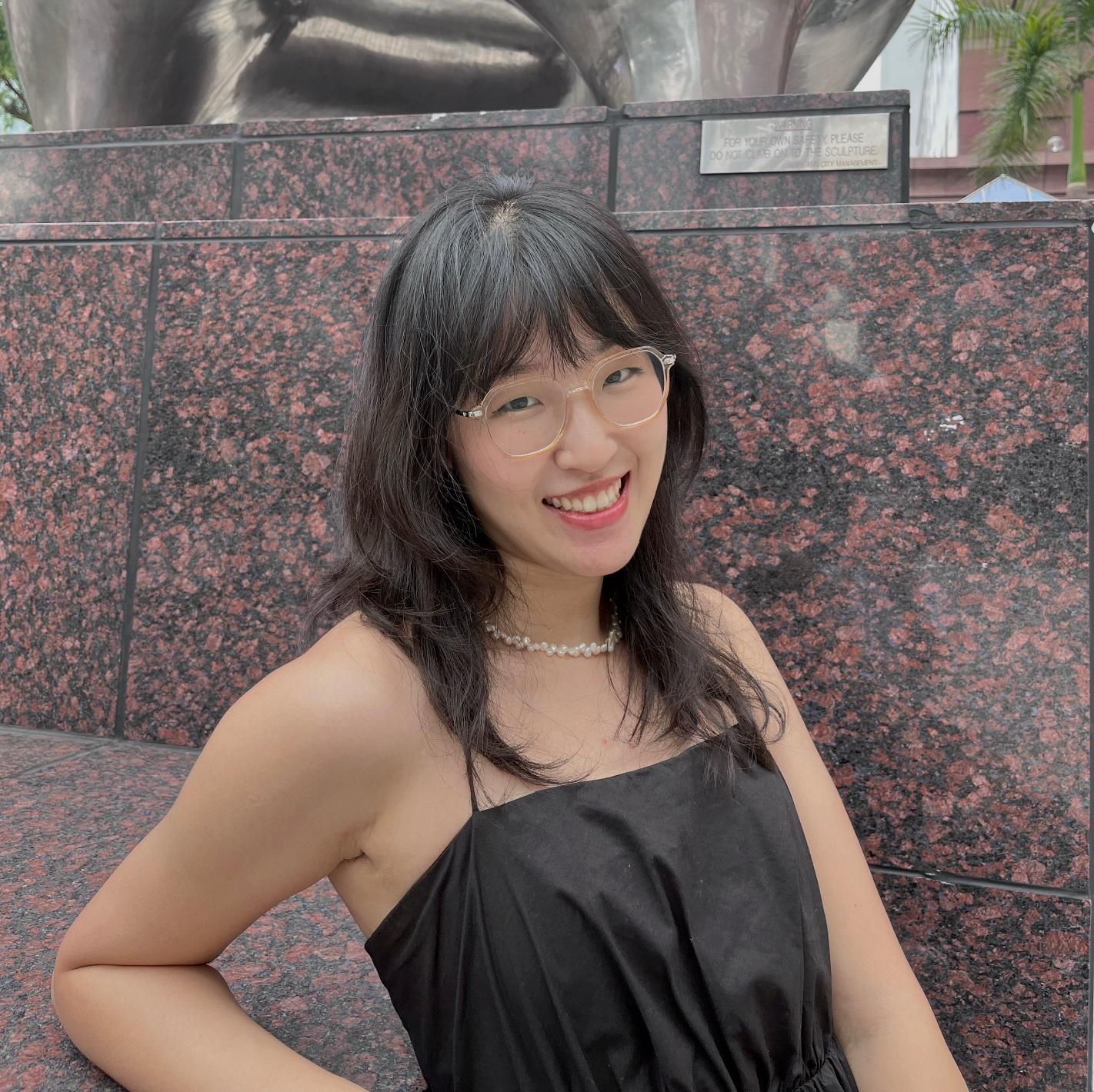
Before joining NTU, Gong Ze got her B.A in film sound production and M.A in film sound theory at Beijing Film Academy. She mainly focused on film sound production during her bachelor’s degree. Later, she chose research path for future individual development. Her M.A. thesis <Disassemble Film Narration Methods And Reconstruct of the Logic of Film Sound>, analyzed the film sound using the narratological approach and was awarded as Outstanding Master Thesis by BFA.
In her current doctoral study in Ntu, ADM (School of Art, Design and Media), Gong Ze now researches the Chinese film sound style and its mode of production, as a crossover of media industry studies, sound studies, and national cinema, from the critical cultural studies and production studies perspective.
Wang Mengdie
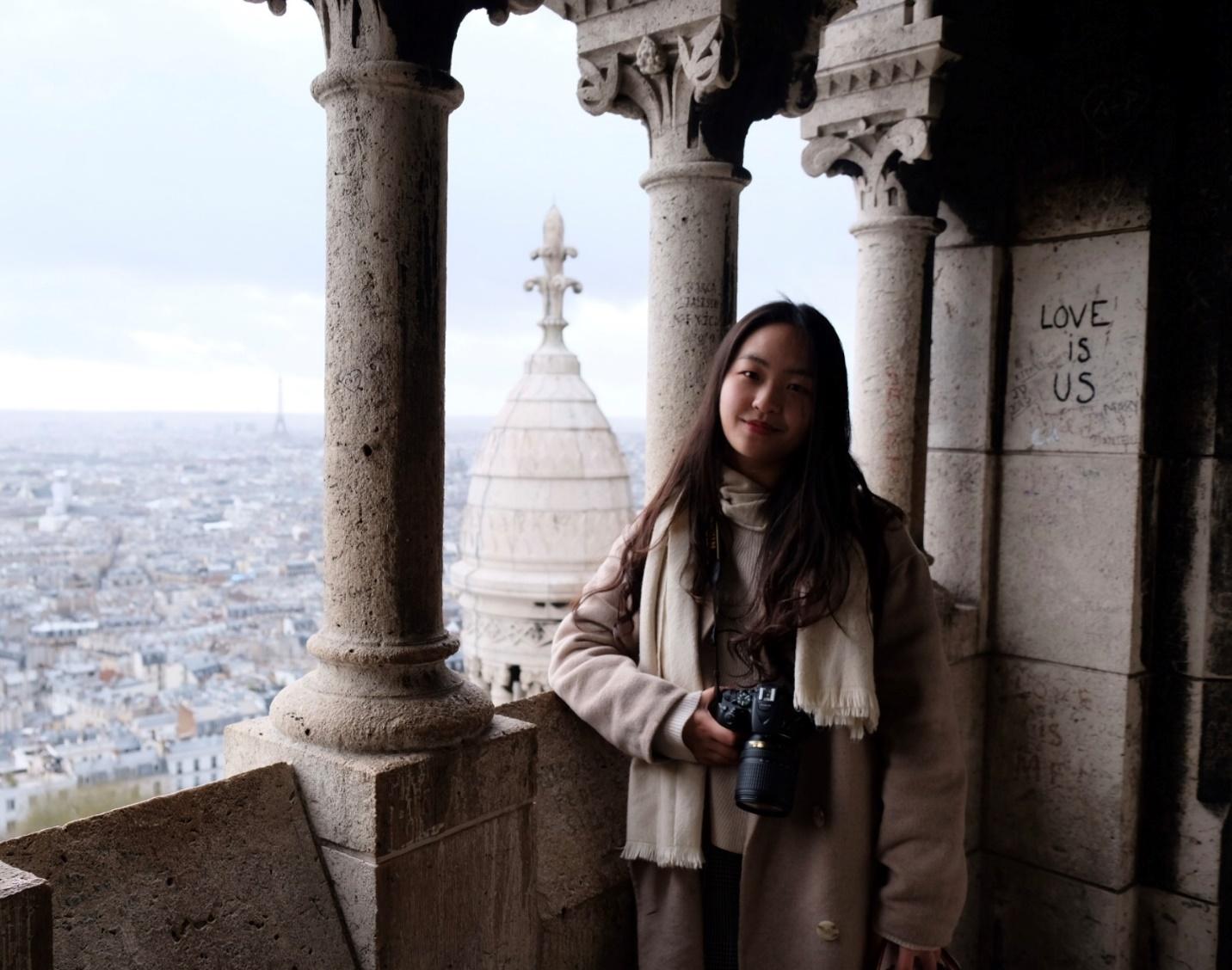
Her research, focusing on the game-based approach for collaborative urban design in virtual reality. By applying technological innovation to simplify the design process and promote public participation, she hopes to find a solution for sustainable urban development.
Prior to her studies at NTU, she graduated from Politecnico di Milano with a master’s degree in landscape architecture, and she had diverse studying experience in China, South Korea and Germany. After graduation she collaborated in an urban renewal project in Lugano, Switzerland and been nominated as the competition winner.
Xie Shujiao
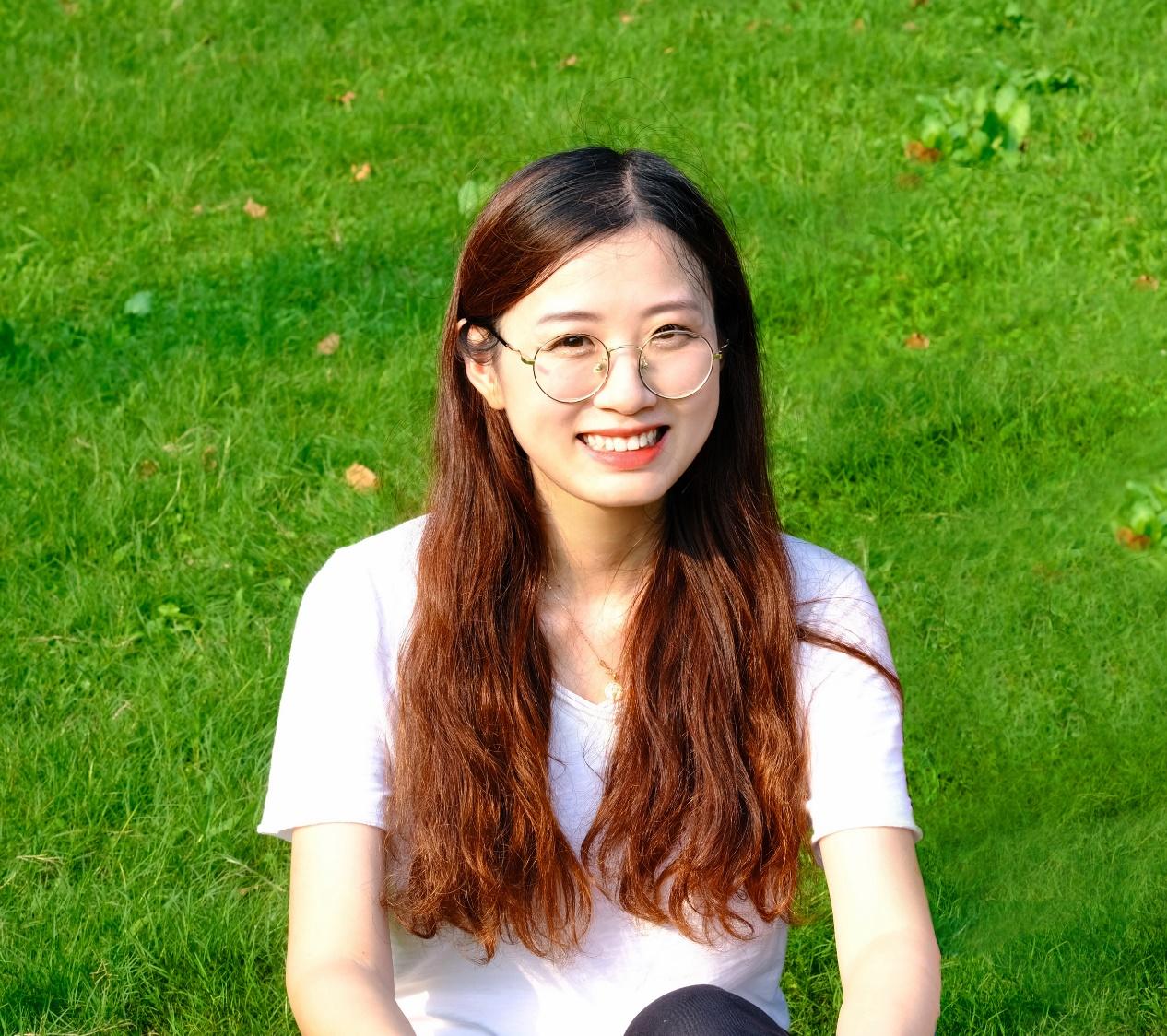
Xie Shujiao is a PhD student at the School of Art, Design and Media at Nanyang
Technological University in Singapore. Prior to her doctoral studies at NTU, she earned a Master of Architecture degree from Tongji University and a Bachelor of Architecture degree from Xi'an Jiao Tong University in China. Her research interest lies primarily in the field of urban media art spanning both mappings on urban surfaces and large-scale media walls. Combined with her previous professional experience in space-making, shujiao is passionate about exploring various digital media technologies to create architectural and artistic installations in response to the urban discourses and urgencies of our time.
She's currently researching the situation, problems and countermeasures of urban media art in China. This project aims at appreciating the historical development of urban media practices across time and space, identifying the factors that contributed to its evolution as well as disclosing the social impacts that the integration of media technologies and the urban environment exerted on our everyday lives. It is an investigation of urban media projects at the intersection of technology, architecture and art, including architectural projection mappings, media walls, building facades and multimedia installations all that emerged in the urban realms since 1990s in China. It seeks to trace the origin of this multi-disciplinary field and document people and events of historical significance in shaping where and how urban media art takes place in China. The project also analyzes the factors that pushed forward the frontiers of varying application of urban media art in China's context of cultural tradition and urban processes. Finally, it draws attention to the social and cultural changes generated by the public presence of these artistic practices and provides suggestions for responding to the challenges.
Li Qing
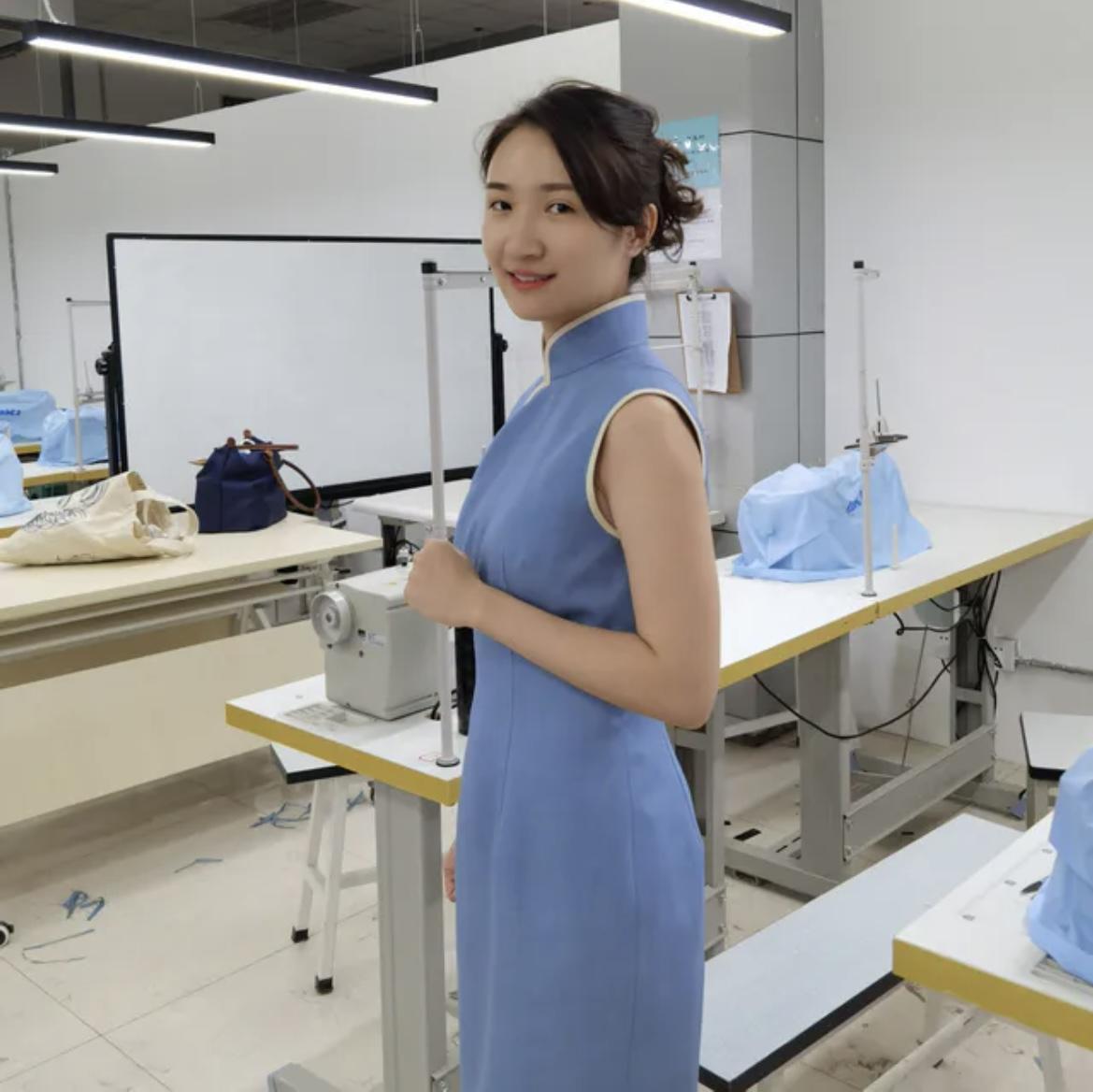
Li Qing is a PhD candidate at the School of Art, Design and Media at Nanyang Technological University in Singapore. She obtained a MA degree in Interior Design from the University of Edinburgh and a bachelor’s degree in Art and Design from the Beijing Institute of Fashion Technology. Before her studies at NTU, Li Qing had worked as a fashion designer and an interior designer in Guangzhou and Beijing. Her research interest lies in the material cultures in the non-Western contexts.
Her dissertation, The Revival of a Traditional Craft: Gambiered Canton Gauze in China and Beyond, focuses on the traditional dyeing techniques of a silk textile and its contemporary modifications. It investigates the rich cultural heritage of gambiered Canton gauze in history and its eco-friendly dying process using vegetable dye and iron-rich mud, and how contemporary designers utilized these to create distinctive design identities while reinventing it.
Yi Yinzi
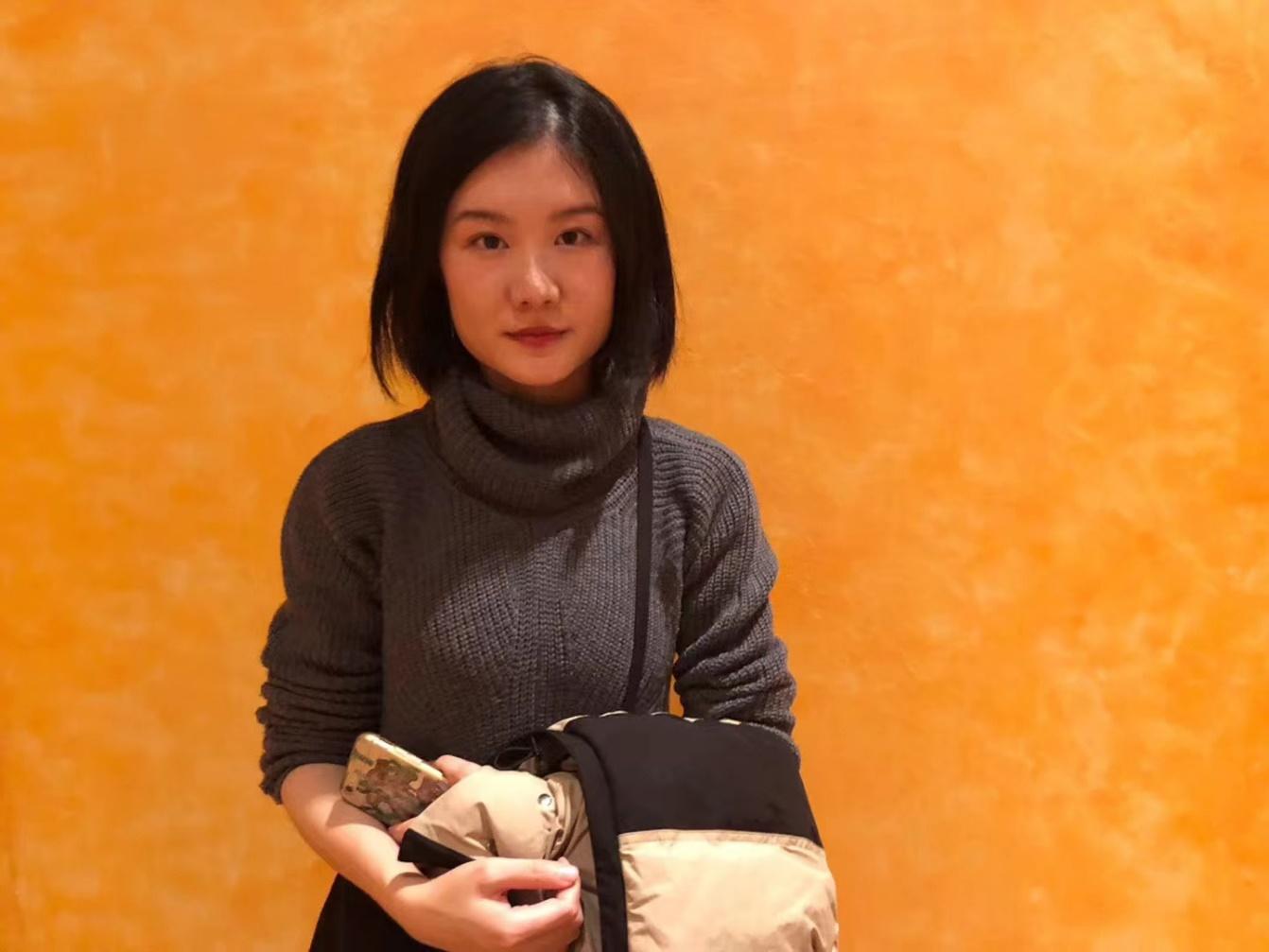
Yi Yinzi’s current research uses instructional texts and strategies in art practices to recalibrate existing ideas and histories of Conceptual Art in Southeast Asia. Prior to her studies at NTU, she worked as a human resource officer, a gallery assistant, and an independent curator. She obtained her bachelor’s degree in English from Renmin University of China, and master’s degree in Art history & Arts administration from the School of the Art Institute of Chicago.
Zhang Ye Yang
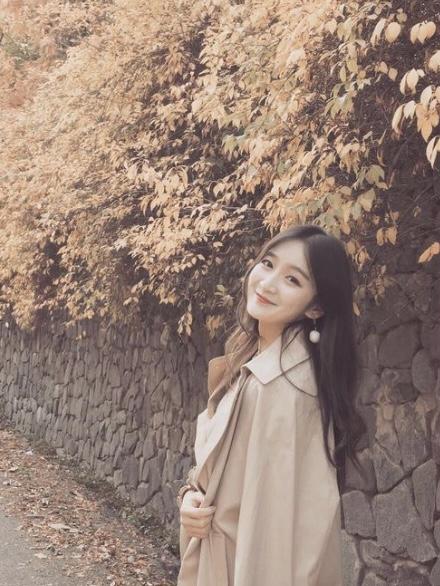
Ye Yang received her B.A. in Asian Studies and B.Sc. in Culture and Design Management at Yonsei University, South Korea; and her M.A. in Film Studies at University College London, United Kingdom. She has also studied Chinese mass media at Peking University. Prior to her studies at NTU, she worked as a producer for film studios in Beijing. Her research interests lie in organizational sociology of creative industries in Asia, the political economy in cinema and media, questions of cultural hybridizations or global mélange, and the discourse of media production and audiences.
Ye Yang’s research encompasses and illustrates film history and media production industries in the socio-historical and industrial context, paying particular attention to their political economies, infrastructures, and their organizational work cultures. Her dissertation considers how to encode and decode the nuanced dynamic of contemporary Chinese film practice and addresses how transformation, style, and value judgment will originate in a production culture that navigates between institutional implications, commercial demands and artistic forms.
Ramakrishnan Ramesh

Ramakrishnan Ramesh is a photographer, visual arts curator and researcher based in Singapore. His undergraduate and graduate education was in the sciences, marketing and business. After a successful career spanning three decades in companies like P&G, Philips, Seagram Pernod–Ricard and Danone, he returned to academia in 2018, graduating with an MA in Asian Art Histories from Goldsmiths-Lasalle, Singapore. In 2019-20 he was artist-in-residence at MES56, a photo-art collective in Yogyakarta, Indonesia, and at Tentacles Arts Space in Bangkok, Thailand. Ramesh has published several photo-essay books: Pondicherry (2013), Mahabalipuram (2014), Borobudur (2015) and Thaipusam (2015). His research interests are diverse and include documentary and LGBTQ photography, modern art, urban culture, river cities and Asian religious iconography. Ramesh is a keen thinker, traveller and mentor, passionate about photography and its role in socio-cultural anthropological studies.
Research
The Ganges River is the spiritual lifeline of India and embodies multiple realities. Cities along the river such as Varanasi are a microcosm of Indian spirituality and function as carriers of myth, religion, knowledge, culture and stories. I explore the Ganges’ river settlements from a socio-cultural anthropological perspective, using three cities—Haridwar, Varanasi, and Kolkata—as case studies. These cities are in the midst of great transformation due to rapid urbanisation and ecological and lifestyle changes driven by the forces of modernity. The questions I am asking are: “What are the core traditional, spiritual and socio-cultural activities of the Ganges’ river cities? How have they been influenced or impacted by modernity?” I will also be researching how other modern and contemporary artists have visualised the Ganges and its cities, and how their art has influenced our conceptualisation of the Ganges’ river cities. My research emphasises a practice-based approach that generates and utilises photographs, moving images, and soundscapes. It can be situated in the crosshairs of socio-cultural anthropology, history and photography.
Ong Kian Peng

Kian Peng is a media artist whose work is situated at the intersection of art, technology, and ecology. His practice-based research focuses on the imperceptibility of Climate Change, exploring immersive and technological ways of visualising and representing the invisible and intangible.
Kian Peng graduated from UCLA with an MFA in the Design Media Arts program with the support of the Design Singapore Scholarship. He is currently a PhD student at the School of Art, Design and Media and NTU Research Scholarship recipient. His works have been exhibited in spaces such as the Tainan Museum of Fine Art, Singapore Art Museum, Arebyte Gallery London, ICA London, Total Museum Seoul, and ICA Singapore. He has also presented in festivals like the Singapore M1 Fringe Festival, International Computer Music Conference, Siggraph Art Gallery, FILE Festival Brazil, Asian Students and Young Artists Festival, Japan Media Arts Festival, Singapore Open Media Art Festival, and Yeosu International Art Fair. Ong was awarded the President's Young Talent Grand Prize in 2015. Since 2017, he has been running Supernormal.space, an independent art space focusing on emerging and experimental art practices.
Lacaste Eunice Paola Ramos
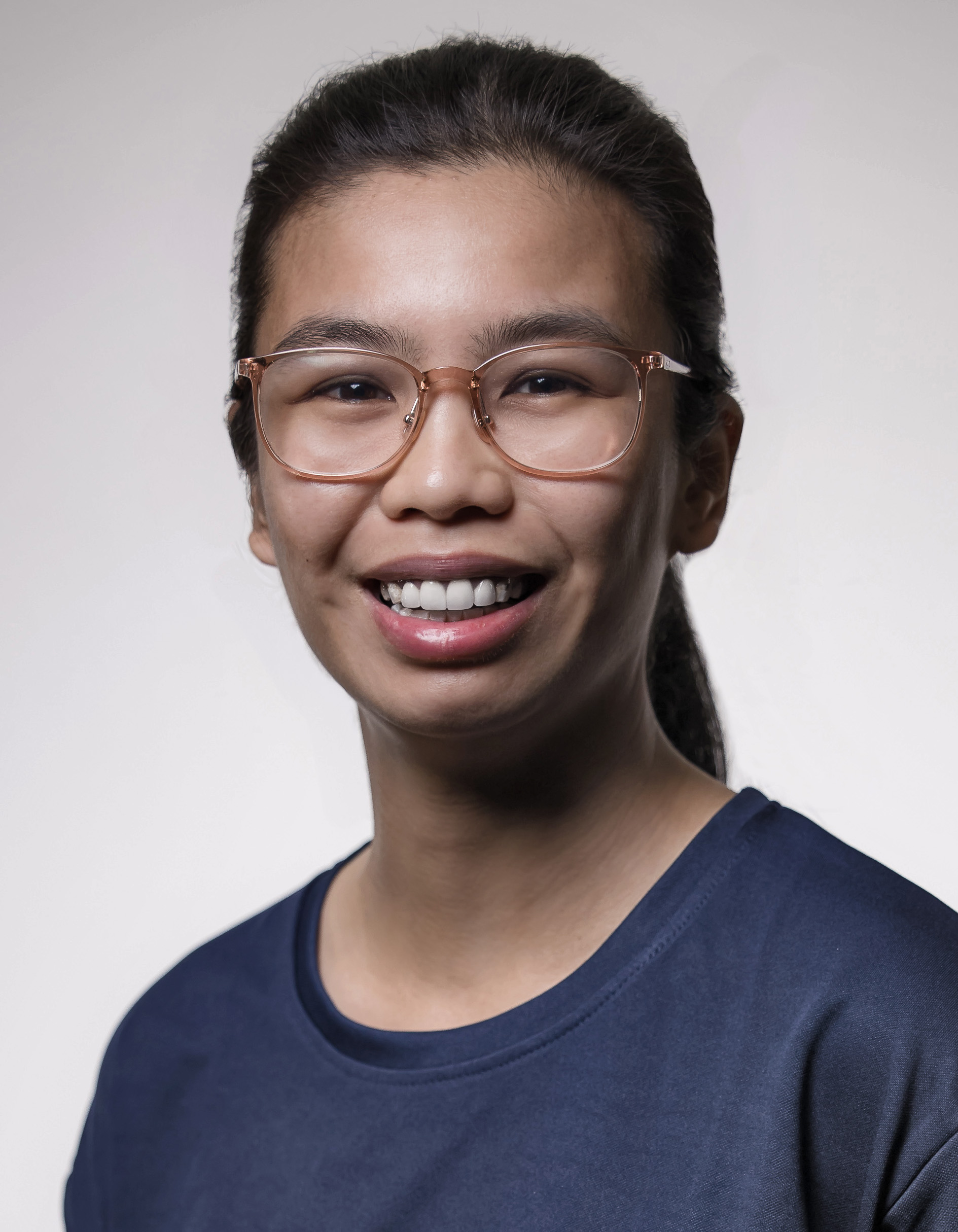
Thesis Title:
Screens and Exhibition Spaces in Contemporary Singapore
Screens are now more marbled in the viewer’s experience with art, especially at a time of a global lockdown. Not only are there more screen-based artworks being produced but art-making and distribution are also pivoting from an exclusively physical representation to digitally augmented displays. More exhibitions are simulated on virtual spaces with 360° view. More artwork labels and exhibition notes are projected on screens, underscored with hyperlinks and response codes. The screen dialled from being a supplementary option to the new normal.
The reconfiguration of representations through screens also shift the exhibition spaces. Screens are becoming more inescapable and indispensable as a tool for exhibiting art. Today, screens can provide all-seeing access to artworks, access that is not limited by space or time, access that is made more pronounced during a pandemic. A physical exhibition space allows ambulatory activities where the audience enters and exit to view art. Screens, however, have become a social space that interactively display art through storage and retrieval of data. Screens have mostly static viewers but dynamic viewership. These actions are not exclusive to one mode of display. However, they highlight a tilting contrast in forms, operations, functionalities, and artistic roles. This paper takes a closer look at this turn to screens as exhibition spaces.
With such modifications, how do we define and account for the changing modes of exhibiting art through screens? Are screens becoming the major channel through which the world is offered as a visual experience? Can presentation and representation of art be exclusively channelled through screen devices? Today, reproducible worldly phenomena are accessed and experienced with the use of a visual apparatus. In circumstances when physical exhibitions have restricted viewership (a maximum of five individuals in a room during pandemic restrictions) and its virtual counterpart hits a thousand views, it is screens that provide the artworks with its viewership. Society’s current position amidst the pandemic magnified the already ubiquitous screens. If so, what do screens mean in art practice today? How do art production and distribution shift during the age of the screen? How are screens normalised in exhibition-making and what are its implications on exhibition practices?
This research will shed light on how exhibition practices switch its modes of production, distribution, and circulation with the enforcement of screens during the current pandemic conditions. Aforementioned questions will be asked in the context of museums as art institutions. There will be interviews with different art practitioners who can provide perspectives from different artistic disciplines on how art exhibition is recalibrated in the age of the screen.
Research Areas
Supervisor
Dr Marc Gloede
Email: lacastee001@e.ntu.edu.sg
Su Hing Leng Ryan
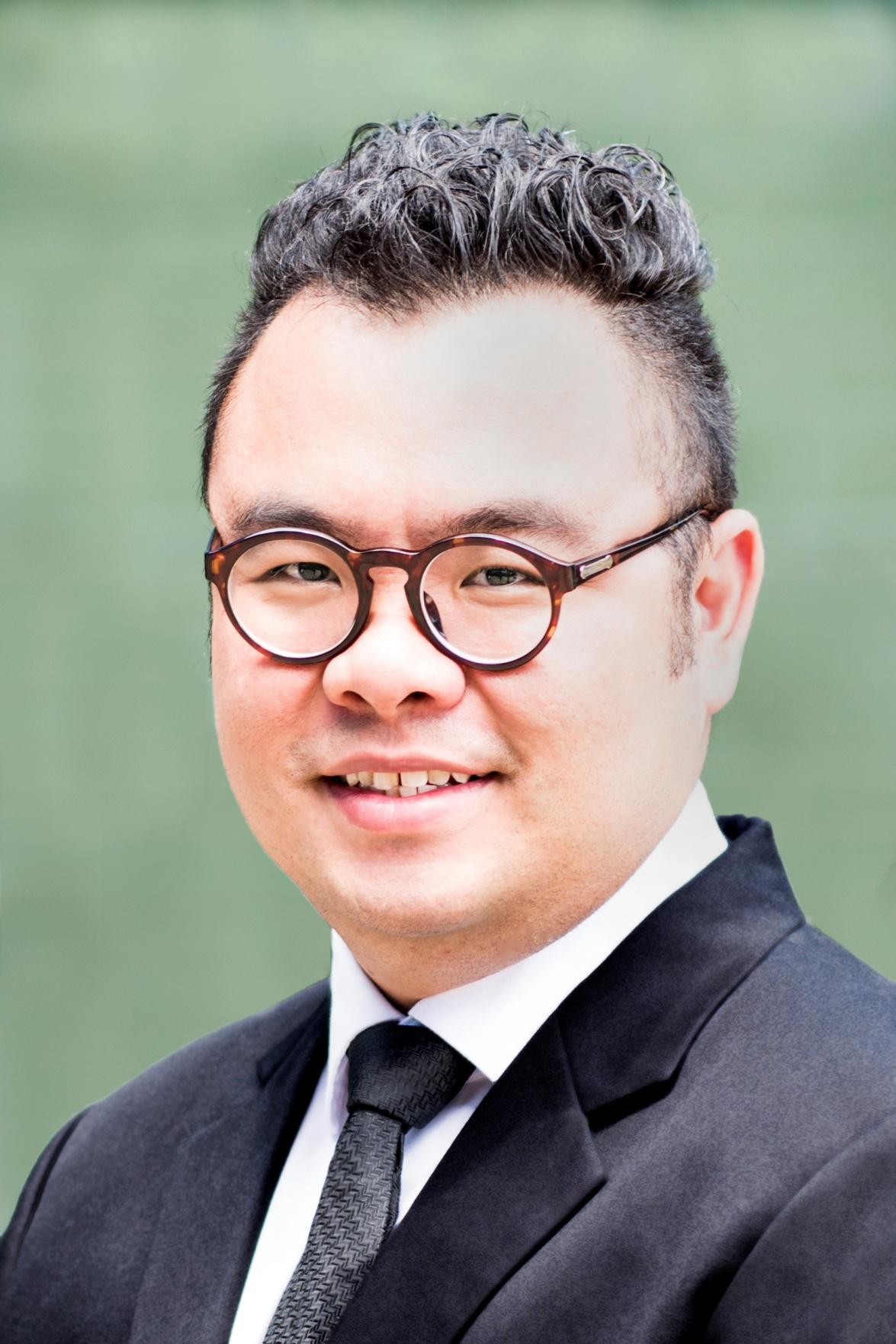
Title: An Art-Related Dispute Resolution Framework for Singapore
Is the creation of a dispute resolution framework to handle international art-related disputes in Singapore practical? If so, what should the framework look like and what kinds of disputes should it handle?
The dramatic growth in trade and investment has led to an increased demand for dispute resolution services in Asia. Singapore has been lauded for its convenient location, good legal system and neutrality. While courts and Alternative Dispute Resolution (ADR) institutions seek to resolve disputes with a commercial nature, it is submitted that there is merit in the creation of specialised dispute resolution framework to handle international art-related disputes in Singapore, as specialised knowledge is required to better serve the interests of parties in an art-related dispute.
Research Areas:
- Art Law
- Cultural Property Law
- Media Law
- Intellectual Property Law
- Alternative Dispute Resolution (ADR)
- Contemporary Art
- Southeast Asian Art
- Curatorial Practices
- Singapore Arts Ecosystem
Supervisors:
Prof Ute Meta Bauer
Assoc. Prof David Tan
Email: SUHI0001@ntu.edu.sg
Kathleen Elizabeth Ditzig Li Ying

Thesis topic:
The Exhibitionary Complex of a New Nation: Exhibitions of Political Sovereigneity, National Development and Cultural Exchange in Southeast Asia during the Cold War (1950s-1980)
This research seeks to outline an exhibitionary complex of the new nation state in Southeast Asia that arises out of Cold War cultural exchange with the US between the 1950s and 1980 in Singapore and the Philippines. The research will study tendencies toward defining and promotng internationalism and how this informed the evolution of exhibitions and art production in Southeast Asia (e.g. in the trope of the survey exhibition of Southeast Asia or in the inscribing of qualities to specific types of art.)
Research interests areas
- Southeast Asia and the Cold War
- Cultural Diplomacy
- The rise of neoliberalism
- Exhibition histories
- National art histories
- Politics of Display
- Cultural infrastructure and policy
Supervisor: Prof Ute Meta Bauer
Email: DITZ0001@e.ntu.edu.sg
Hedren Sum Wai Yuan

Thesis Title:
Aggregating scholarship in the digital era: An interdisciplinary investigation on the academic studies relevant to the understanding of the painting known as the Ship of Fools by Jheronimus Bosch as a show history
From Vasari, Ripa and da Vinci (as observed through his notebooks) in the 16th century to the likes of Warburg, Müntz, Panofsky, Gombrich and Mitchell in the 19-20th century, the ideas of iconography and in particular the relationship between text and image in iconology has been has been argued, discussed and demonstrated across the centuries in many different ways. The question of (or questions related to) what is an image was also explored and led to a variety of different things, such as “pictures, statues, optical illusions, maps, diagrams, dreams, hallucinations, spectacles, projections, patterns, memories, and even ideas”. The development of computing brought in the rise of digital technology making digitalisation of different artefacts and information processing possible, with new digital formats, digital formats, interpretations and facsimiles of images, which further intensifying the question of “what is an image”. Today, the multiplicity of images also suggest the multiplication in access, searching, discovery, learning, research, publication, dissemination of knowledge with new “ideas of imagery” in the forms of interface, “infosphere”, and “intraface” created. Using the painting, Ship of Fools, by Jheronimus Bosch (c. 1450 – 1516) as the key object of study, my PhD research will centre around two key questions relating to aggregating of scholarship of a painting as an image, and ways of seeing, sensing and understanding paintings: (1) How scholarship of a painting as an image is aggregated then and now in the digital era? (2) How a painting can be understood and what the understanding of a painting means then and now in the digital era? With nothing in his own words, and little was known about him, scholarship about Bosch’s personality were mainly done through his survived works (or works attributed to him). His paintings were also often compared, juxtaposed and quoted among his own paintings, and to others from Bruegel in the 16th century to 17th century Japanese gothic paintings, 20th century Salvador Dali, other genres of art in music, dance and film, and cross disciplinary into the humanities. I will adopt an interdisciplinary approach in my research from the fields of art history, information science, computer science and psychology (of art and aesthetics), which will include topics on iconological analysis, ontology and metadata framework, digital models and interfaces for aggregating scholarship, and visual perception and digital aesthetic experiences of digital scholarship aggregation.
Research Areas
Visual analysis of paintings: iconology and iconography
Knowledge aggregation
Knowledge interfaces
Digital aesthetics
Multiplicity of image
Jheronimus Bosch
Supervisor
Associate Professor Andrea Nanetti
Debbie Ding
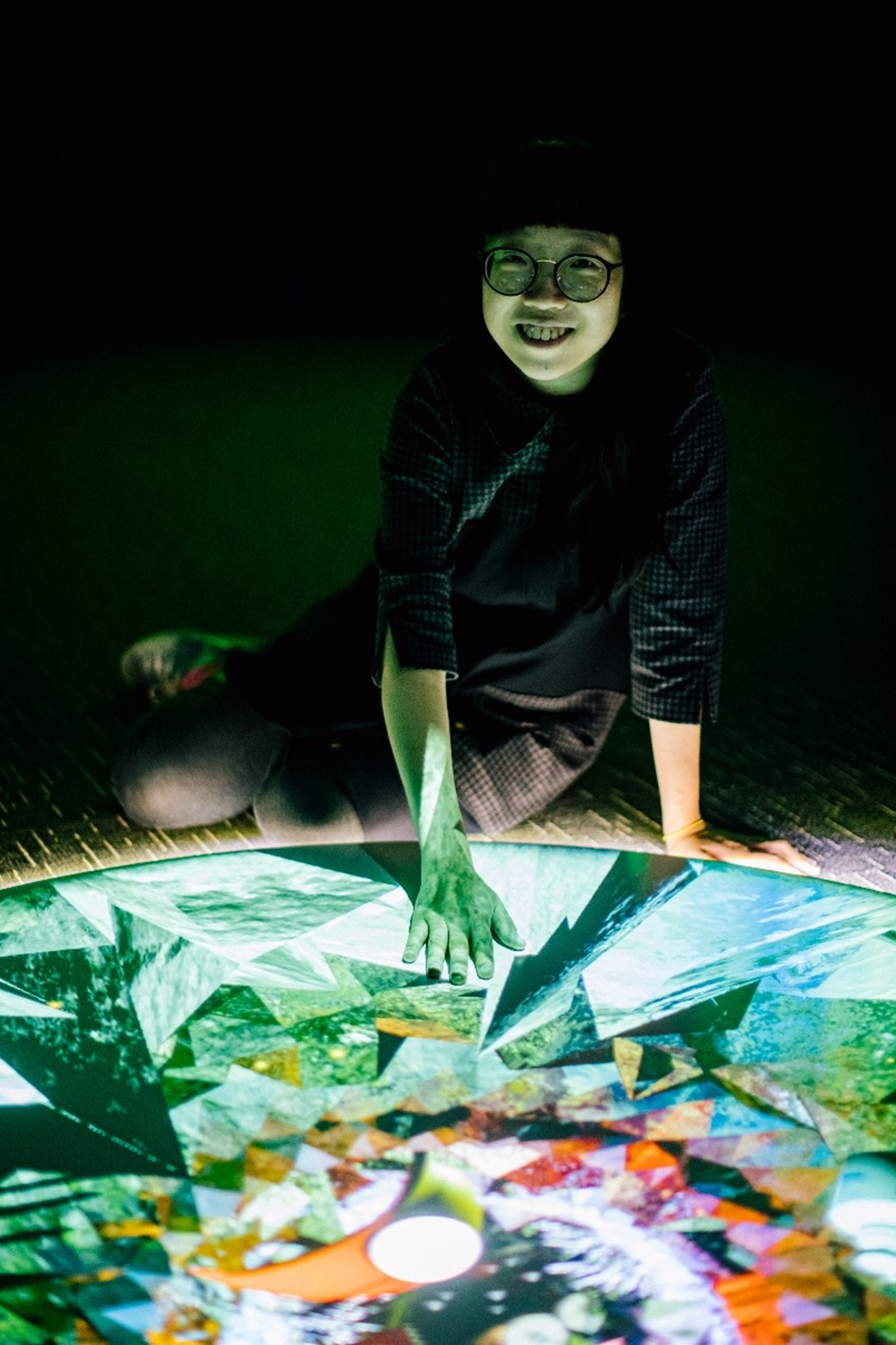
Debbie Ding (DBBD.SG) is a visual artist and technologist whose interests range from historical research and urban geography to visions of the future. Her practice-led research evolved from rewriting the city through walking, mapping and psychogeography - to using game engines to produce virtual reality worlds and experiences as part of artistic practice.
DBBD received a BA in English Literature from the National University of Singapore and, as a recipient of the NAC Arts Scholarship (Postgraduate), an MA in Design Interactions from the Royal College of Art, London. She is currently an ADM PhD student and recipient of the NTU Research Scholarship. She has had solo exhibitions at The Substation Gallery, Singapore (2010) and Galerie Steph, Singapore (2013). Notable group exhibitions include “Radical Gaming” (HEK Basel, 2021), “Wikicliki” (Singapore Art Museum, 2021), “President’s Young Talents” (Singapore Art Museum, 2018); “After the Fall” (National Museum of Singapore, 2017); Singapore Biennale (2016); Radio Malaya (NUS Museum, 2016). Her work was shortlisted for the President’s Young Talents 2018 and Impart Art Awards 2020.
Research interests:
- Virtual reality
- Virtual worlds
- Artistic practice
- Game studies
- Metaverse
Email: DEBB0008@e.ntu.edu.sg
Wang Zheng
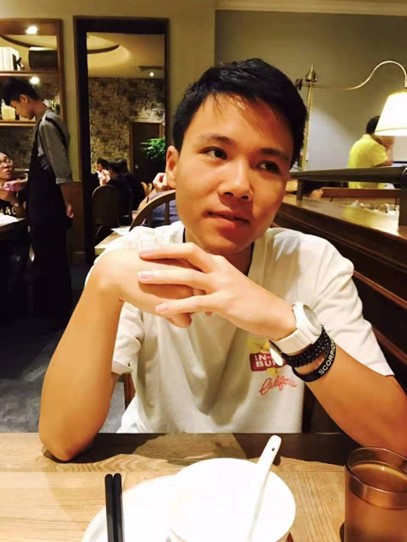
Of Iu-Mien (Yao) ethnic-minority descent, Zheng (Moham) Wang is an artist, curator, and publishing writer of critical and creative content from Wuhan and California. Wang received his B.A. double-majoring in Studio Art and Art History (HONORS track) at Rice University, Texas, USA, and his M.A. in Aesthetics and Politics with the Lillian Disney Scholarship at California Institute of the Arts, Valencia, California, USA. Prior to his studies at NTU, he worked as an exhibition intern with the Bank of America Stipend-ship at the San Francisco Museum of Modern Art and has independently curated multiple exhibitions internationally. He is currently a Ph.D. student at the School of Art, Design and Media and an NTU Research Scholarship recipient. His works have been exhibited in spaces such as the M.A.D.S. Gallery, Milan, Conroe Art League, Texas, KONGLAB, and Nordic Contemporary Art Center, China, 2022 Edinburgh’s International Poetry Festival – “Push the Boat Out,”and magazines like Rice Magazine (USA) and Sine Theta Magazine (Canada). His literary works have been published in China Daily (Taiwan), Voices and Verse Poetry Magazine (Hong Kong), Literature Monthly (Hong Kong), Tsingtao Literature (China), Youth (China), Youth Literator (China), the Vineyard Poetry Quarterly (Taiwan), Queer Southeast Asia journal (UK), Comparative Woman LSU journal (USA), Malaysian Indie Fiction (Malaysia) and his first poetry-illustration book collection book to be published by Cite E-Printing Co. (Taiwan), Mountain Rock. His academic works have been published in the Aesthetic Education journal (China) and Street Art and Urban Creativity journal (Portugal).
Thesis Title:
New Subjectivity in Heterotopia: The Eastern Body in Chinese Media Art
An abstract of your thesis
The recent spotlight on Chinese contemporary art has drawn unprecedented attention to this “new” genre, and as a subfield of the genre, media art, including that made in or beyond China by those identified as Chinese, became a subject of interest in the curatorial and academic arenas. Exhibitions related to Chinese media art are soaring both in the West and in China itself. Behind this dazzling shoot to stardom, Chinese media art remains a vague issue as a young yet complex system of practices and ideas that entail further investigation from multiple directions. This academic engagement is a timely duty to better understand the development of media art broadly and to understand the rise of China as a global power in a more comprehensive and responsible way. In such vein, scholars are prompt to ask the following questions: What is so specific about Chinese media art that made it a darling of Christie’s and MoMA if not for its capitalistic potential? What is essential about this genre that deserves our attention? How should we envisage the development of this genre yoked to both history and future, and most importantly, to the present?
The previous scholarship has thrown some light on this inquisitive path, and many scholars such as Wu Hung, Paul Gladston, Jörg Huber, and Geremie Barmé have joined their efforts to flesh out a largely complete skeleton of contemporary Chinese art. In retrospect, their scholarship has predominantly focused on the historical connections of this genre, to which my dissertation will be gratefully indebted. The more recent their publications are, the more attention they have given to Chinese media art. In this established discourse, their narratives seem to revolve around the politics of China during the twentieth century, and thus, a macroscopic view is preferred to support microscopic analyses of specific artworks. Grandiose as this view might appear, it would inevitably neglect more individual and critical aspects. For example, the question of the Eastern Body was never thoroughly examined in relation to Chinese media art despite its conspicuous role in this genre. Specifically, one might also wonder about what aspects of the body are being engaged, challenged, and reformed through the emerging presence of media in art appreciation and creation. Moreover, a perspective independent from a Eurocentric or Sinocentric narrative is also lacking in this regard, and only by involving more knowledge of the Eastern body in an Asian context will our discourse become more productive without losing its focus in the relentless dwelling on technical and political particularities.
This dissertation will aspire to bridge the academic gap by exploring the somatic aspect of Chinese media art and bringing in a new theorization of the “media heterotopia” to review how subjectivity is deprived and recovered through this process of mediation. Additionally, an art-historical genealogy will grow from the theory and establish a case study for the research questions emerging from the multiple modes of bodily engagements reflected by the artists and their works. In conclusion, the project will proffer an alternative framework to access the burgeoning genre of Chinese media art through the somatic and, by challenging and diversifying the definition of the somatic through the case studies, find a more effective narrative from the disparate dots of history to pierce through the present. Ultimately, this endeavor will inspire more scholars and artists to see and utilize the body as a site for social intervention regarding the issues of gender, race, and power, to be discussed in the ensuing chapters.
Research Areas
Media art
Asian art history
Critical Theory
Body politics
Exhibition studies
Diaspora studies
Aloqaili Hajar Saud I
I am focusing on creating social change and development in the lives of people with special needs through interactive and visual design. I obtained my B.A. and M.A. in interactive and visual design from the Queensland University of Technology, Australia. Brisbane. I was awarded the 1st Prize of the Dean's Award for Excellence in Interactive and Visual Design upon completing my B.A.
My dissertation focuses on creating interactive and visual design with the use of digital technology to create development in education for the visually impaired and the blind. After accomplishing my doctorate, I intend to conduct research and raise awareness amongst my fellow designers about the importance of designing for people with special needs, encouraging them to adopt a novel approach to the field.
I am originally from Saudi Arabia and have spent the last six years working as a lecturer in the Department of Graphic Design and Multimedia of the Media and Communication College at IMSIU. Once I accomplish my Ph.D., I intend to return to my home country and continue working and conducting research in my subject of interest.

